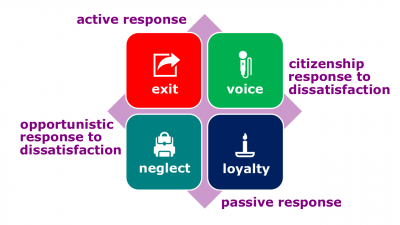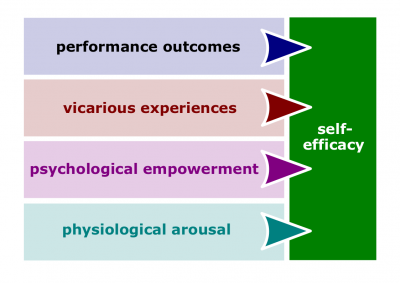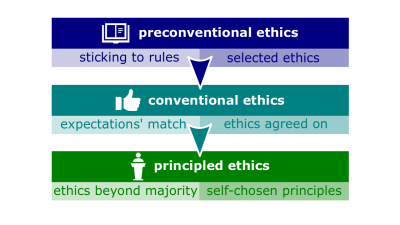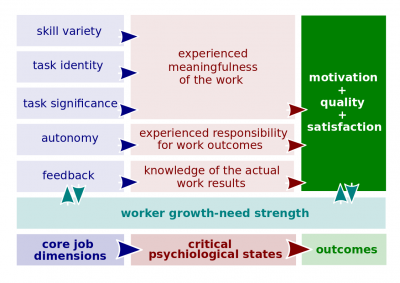Difference between revisions of "Talent Management Quarter"
(→Practices) |
(→Concepts) |
||
| Line 47: | Line 47: | ||
#*[[Psychological contract]]. An unwritten agreement that sets out what management expects from an employee and vice versa. | #*[[Psychological contract]]. An unwritten agreement that sets out what management expects from an employee and vice versa. | ||
#'''[[Referent]]'''. A person, system, or self against which individuals compare themselves to assess equity. | #'''[[Referent]]'''. A person, system, or self against which individuals compare themselves to assess equity. | ||
| − | |||
#[[File:Self-efficacy-sources.png|400px|thumb|right|[[Self-efficacy source]]s]]'''[[Workforce development]]'''. The process of developing [[workforce]]. | #[[File:Self-efficacy-sources.png|400px|thumb|right|[[Self-efficacy source]]s]]'''[[Workforce development]]'''. The process of developing [[workforce]]. | ||
#*[[Intergroup development]]. [[Organizational development]] efforts to change the attitudes, stereotypes, and perceptions that groups have of each other. | #*[[Intergroup development]]. [[Organizational development]] efforts to change the attitudes, stereotypes, and perceptions that groups have of each other. | ||
Revision as of 20:59, 19 May 2018
Worker Productivity Quarter (hereinafter, the Quarter) is a lecture introducing the learners to individuals development primarily through key topics related to worker productivity. The Quarter is the last of four lectures of Individuals Quadrivium, which is the fourth of seven modules of Septem Artes Administrativi (hereinafter, the Course). The Course is designed to introduce the learners to general concepts in business administration, management, and organizational behavior.
Contents
Outline
Individual Decisions Quarter is the predecessor lecture. In the enterprise implementation series, the previous lecture is Operations Management Quarter.
Concepts
- Employee productivity. A performance measure of both efficiency and effectiveness.
- Group order ranking. An evaluation method that places employees into a particular classification, such as quartiles.
- Individual ranking. An evaluation method that rank-orders employees from best to worst.
- Shaping behavior. The process of guiding learning in graduated steps using reinforcement or lack of reinforcement.
- Job satisfaction. (1) A positive feeling about one's job resulting from an evaluation of its characteristics; (2) An employee's general attitude toward her or his job resulting from the difference between positive and negative feelings.
- Job dissatisfaction. A negative feeling about one's job resulting from an evaluation of its characteristics.
- Counterproductive workplace behavior. Any intentional employee behavior that is potentially damaging to the organization or to individuals within organization.
- Counterproductive work behavior. Actions that actively damage the organization, including stealing, behaving aggressively toward coworkers, or being late or absent.
- Counterproductivity. Actions that actively damage the organization, including stealing, behaving aggressively toward coworkers, of being late or absent.
- Deviant workplace behavior (also known as antisocial behavior or workplace incivility). Voluntary behavior that violates significant organizational norms and, in so doing, threatens the well-being of the organization or its members.
- Employee theft. Any unauthorized taking of company property by employees for their personal use.
- Absenteeism. The failure to show up for work.
- Withdrawal behavior. The set of actions employees take to separate themselves from the organization.
- Turnover. The voluntary and involuntary permanent withdrawal from an organization.
- Dissatisfaction behavior. Worker's behavior resulted from his or her job dissatisfaction.
- Exit behavior. Dissatisfaction behavior directed toward leaving the organization. In other words, exit behavior is dissatisfaction expressed through behavior to exit the organization.
- Neglect behavior. Dissatisfaction behavior directed toward withdrawal from carrying for the organization. In other words, neglect behavior is dissatisfaction expressed through allowing conditions to worsen.
- Loyalty behavior. Dissatisfaction behavior directed toward standing by the organization quietly. In other words, loyalty behavior is dissatisfaction expressed by passively waiting for conditions to improve.
- Voice behavior. Dissatisfaction behavior directed toward improving the organization. In other words, voice behavior is dissatisfaction expressed through active and constructive attempts to improve conditions.
- Professional ability. An individual's capacity to perform the various tasks in a job.
- Reading skills. Skills that entail an understanding of written sentences and paragraphs in work-related documents.
- Writing skills. Skills that entail communicating effectively in text as appropriate for the needs of the audience.
- Speaking skill. Skills that refer to the ability to communicate information and ideas in talking so others will understand.
- Persuasion skill. Skills that enable a person to influence others to change their minds or behavior.
- Political skill. The ability to influence others in such a way as to enhance one's objectives.
- Emotional labor. A situation in which an employee expresses organizationally desired emotions during interpersonal transactions at work.
- Resilience. An individual's ability to overcome challenges and turn them into opportunities.
- Work readiness. The extent to which people have the ability and willingness to accomplish a specific task.
- Administrative competence. Competence needed to undertake enterprise efforts.
- Competence. The ability to do something successfully or efficiently.
- Job-specific competence (technical skill). Job-specific knowledge, skills, and abilities needed to proficiently perform those work tasks that don't require working with other people or make enterprise-wide decisions.
- Human competence (interpersonal skill, people skill). The knowledge, skills, and abilities needed to work well with other people individually and in a group.
- Enterprise competence. The knowledge, skills, and abilities needed to proficiently undertake those enterprise efforts that don't require working with other people or performing those work tasks that are specific for a particular job.
- Conceptual ability. The ability to think and to conceptualize about abstract and complex situations.
- Positive organizational scholarship. An area of organizational behavior research that concerns how organizations develop human strengths, foster vitality and resilience, and unlock potential.
- Employee recognition program. A plan to encourage specific employee behaviors by formally appreciating specific employee contributions. In other words, an employee recognition program is personal attention and expressing interest, approval, and appreciation for a job well done.
- Political behavior. Activities that are not required as part of a person's formal role in the organization but that influence, or attempt to influence, the distribution of advantages and disadvantages within the organization.
- Psychological contract. An unwritten agreement that sets out what management expects from an employee and vice versa.
- Referent. A person, system, or self against which individuals compare themselves to assess equity.
- Workforce development. The process of developing workforce.
- Intergroup development. Organizational development efforts to change the attitudes, stereotypes, and perceptions that groups have of each other.
- Diversity skills training. Specialized training to educate employees about the importance of diversity and teach them skills for working in a diverse workplace.
- Sensitivity training. Training groups that seek to change behavior through unstructured group interaction.
- Mentoring. A process whereby an experienced organizational member (a mentor) provides advice and guidance to a less experiences member (a protégé).
Roles
- Employee. An individual employed by an employer for wages or salary.
- Employer. A legal entity that employs one or more employees.
- Mentor. A senior employee who sponsors and supports a less-experienced employee, called a protégé.
- Compensation and benefits manager. A professional who plans, directs, or coordinates compensation and benefits activities of an enterprise.
Methods
- Attitude survey. A survey that elicits responses from employees through questions about how they feel about their jobs, work groups, supervisors, or the organization.
- Iterative work design. An established procedure for changing workgroup design and workforce development.
- Job engagement. The investment of an employee's physical, cognitive, and emotional energies into job performance.
- Job enlargement. The horizontal expansion of a job by increasing job scope.
- Job enrichment. The vertical expansion of a job by adding planning and evaluating responsibilities.
- Job rotation. The periodic shifting of an employee from one task to another.
- Forced comparison. Method of performance evaluation where an employee's performance is made in explicit comparison to others (e.g., an employee may rank third out of 10 employees in his or her work unit).
Instruments
- Employee compensation. The cash compensation and benefits that an employee receives in exchange for the service he or she performs for their employer and/or for his or her time.
- Total compensation. The total amount of cash compensation and employee benefits that an employee can expect to receive when working for an employer.
- Cash compensation. Any monetary reward that an employee receives in exchange for the service he or she performs for their employer and/or for his or her time. Usually, cash compensation shall include a wage or salary and may include commissions, incentives, and/or bonuses.
- Skill-based pay. A pay system that rewards employees for the job skills they can demonstrate.
- Variable pay. A pay system in which an individual's compensation is contingent on performance.
- Variable-pay program. A pay plan that bases a portion of an employee's pay on some individual and/or organizational measure of performance.
- Merit-based pay plan. A pay plan based on performance appraisal ratings.
- Pay-for-performance program. Variable compensation plans that pay employees on the basis of some performance measure.
- Piece-rate pay plan. A pay plan in which workers are paid a fixed sum for each unit of production completed.
- Bonus. A pay plan that rewards employees for recent performance rather than historical performance.
- Profit-sharing plan. An organization-wide program that distributes compensation based on some established formula designed around a company's profitability.
- Work-life program. General or specific arrangements that an employer offers to an employee in order to accommodate his or her both work and life. Most often, those programs may include work arrangements.
- Wellness program. An organizationally supported program that focuses on the employee's total physical and mental condition.
- Employee assistance program.
- Dependent care.
- Work arrangement. An agreement to arrange work schedule, method, or load.
- Compressed workweek. A workweek where employees work longer hours per day but fewer days per week.
- Flextime (or flexible work hours). A scheduling system in which employees are required to work a specific number of hours a week but are free to vary those hours within certain limits.
- Telecommuting. Working remotely at least 2 days a week on a computer that is linked to the employer office.
- Job sharing. (1) An arrangement that allows two or more individuals to split a full-time job; (2) The practice of having 1).
- Employee benefit (or fringe benefit, perquisite, or, sometimes, perk). Various types of non-monetary benefits provided by an employer to an employee in addition to his or her cash compensation.
- Retirement plan.
- Health insurance.
- Life insurance.
- Disability insurance.
- Vacation.
- Vesting. When an employee of a company gains rights to stock options and contributions provided by the employer. The rights typically gain value (vest) over time until they reach their full value after a pre-determined amount of time. For example, if an employee was offered 200 stock unites over 10 years, 20 units would vest each year. This gives employees an incentive to perform well and stay with the company for a longer period of time.
- Employee stock ownership plan. A company-established benefits plan in which employees acquire stock, often at below-market prices, as part of their benefits.
- Flexible benefits. A benefits plan that allows each employee to put together a benefits package individually tailored to his or her own needs and situation.
- Moral development. A model that describes the process of developing ethical behaviors.
- Preconventional level. The lower level of moral development in which a person's choice between right and wrong is based on personal consequences from outside forces or, in other words, is extrinsically motivated. This level consists of two stages: (a) sticking to rules to avoid punishment and (b) following the rules only when doing so is in the person's interest.
- Conventional level. The middle level of moral development in which a person's choice between right and wrong relies on maintaining expected standards and living up to the expectations of others, or, in other words, is cooperatively motivated. This level consists of two stages: (a) living up to what the people close to the person expect and (b) maintaining conventional order by fulfilling obligations to which the person agrees.
- Principled level. The upper level of moral development in which a person's choice between right and wrong is based on the person's own moral values apart from authority of the groups to which he or she belongs or society in general, or, in other words, is intrinsically motivated. This level consists of two stages: (a) valuing rights of others and upholding absolute values and rights regardless of the majority's opinion and (b) following self-chosen ethical principles even if they violate the law.
- Job characteristics model. A framework for analyzing and designing jobs that identifies five core job dimensions, their interrelationships, and their impact on outcomes. These core job dimensions include skill variety, task identity, task significance, autonomy, and feedback.
- Skill variety. The degree to which a job requires a variety of activities so that an employee can use a number of different skills and talents.
- Autonomy. The degree to which a job provides substantial freedom, independence, and discretion to the individual in scheduling work and determining the procedures to be used in carrying it out.
- Motivating potential score. A predictive index that suggests the motivating potential in a job based on core job dimensions.
Practices
- Job design idea. A process idea designed to change one or more core job dimensions.
Communication Quarter is the successor lecture. In the enterprise implementation series, the next lecture is Stakeholder Arrangements Quarter.






